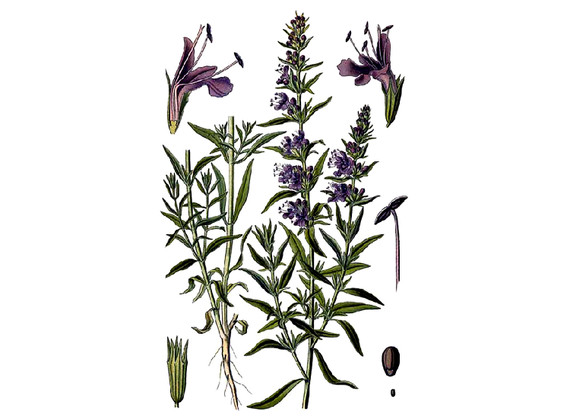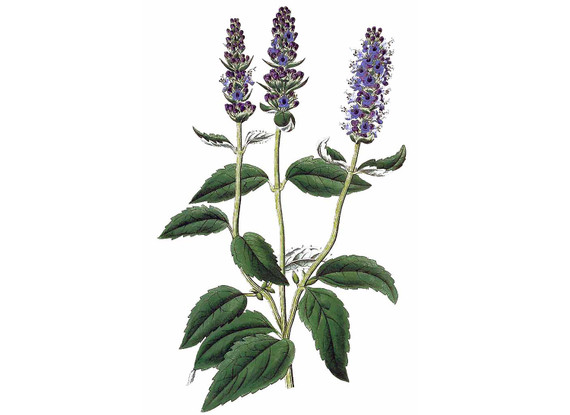Hyssop is an evergreen, bushy perennial native to southern Europe. A member of the mint family, Hyssopus officinalis can be used sparingly as a spice or macerated as a unique flavor to liqueurs. The plant has a long history of folklore in ancient Europe and was often hung in homes for protection. Hyssop herb is also typically made into a syrup or steeped and enjoyed as an infusion of hyssop tea.
"Purge me with hyssop," the Bible records, "and I will be clean." Hyssop has been used for millennia as a holy herb, consecrated for cleaning holy places. Its name comes from the Hebrew word adobe or ezob, which literally means "holy herb". Hyssop is an evergreen bushy herb growing 1 to 2 feet (60 to 90 cm) high on a square stem with linear leaves and flowers in whorls of 6 to 15 blooms. Native to southern Europe, it is grown in gardens in cooler climates around the world. Hyssop has a mint-like taste (which is understandable as it is part of the mint family) that makes it a tasty addition to salads, provided it is used in small quantities. Hyssop has been hung in homes to provide protection from the evil eye, and from witches. It has also been planted frequently on graves as protection for the dead from the living.
Precautions
Not for use in pregnancy except under the supervision of a qualified healthcare practitioner. We recommend that you consult with a qualified healthcare practitioner before using herbal products, particularly if you are pregnant, nursing, or on any medications.
This information has not been evaluated by the Food and Drug Administration. This product is not intended to diagnose, treat, cure, or prevent any disease. For educational purposes only.










